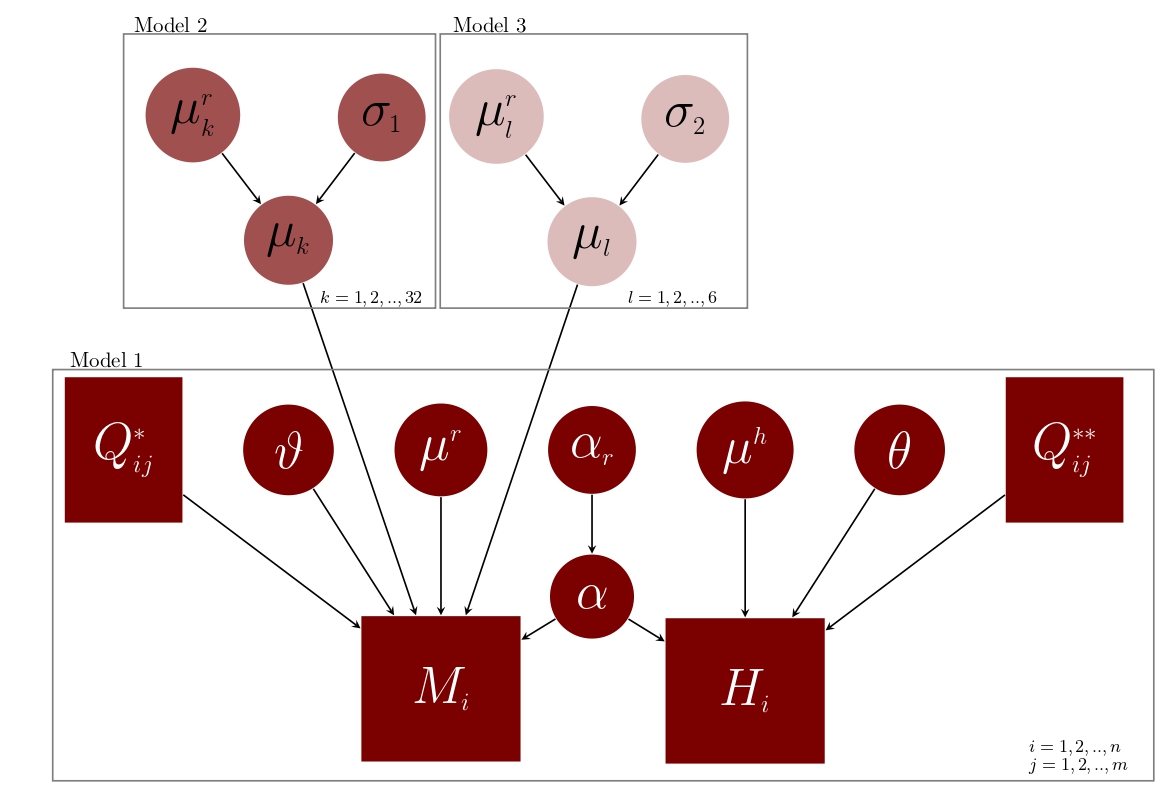Multi-level multi-state modelling applied to hospital admission in mexican patients with COVID-19
Link to full Article (preprint)

Since the beginning of the SARS-CoV 2 pandemic, healthcare authorities have made clear that it is crucial to track and identify COVID-19 symptoms and seek medical attention in the presence of the first warning signs, as immediate medical attention can improve the patient’s prognosis. Therefore the present work aims to analyze the risks associated with the time between the patient’s first symptoms and hospitalization followed by death. A cross-sectional study was performed among Mexican population diagnosed with COVID-19 and hospitalized from March to January 2021. Four different Bayesian models were developed to asses the risk associated with different patient trajectories: symptoms-hospitalization and hospitalization-death. Comorbidities that could worsen the patient outcome were included as linear predictions; these analyses were further broken down to the different states of the Mexican Republic and the healthcare providers within. Model III was chosen as the best performance through a validation of leaving one out (LOO). Increased risk for hospitalization was observed at the global population level for chronic renal disease, whereas for death such was the case for COPD and the interaction of diabetes:hypertension:obesity. Our results show that there are differences in mortality between the states without accounting for institution and it is related to the prompt time of death or viceversa. Regarding the 6 healthcare providers included in the analysis differences were also found. While state-managed hospitals and private sector showed lower risks, in contrast the IMSS seems to be the one with the highest risk. The proposed modelling can be helpful to improve healthcare assistance at a regional level, additionally it could inform statistical parameter inference in epidemiological models.